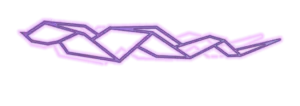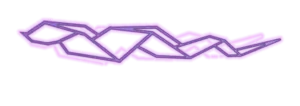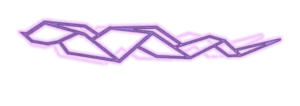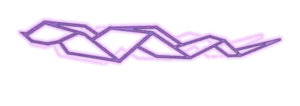👩🏻🔬 The Art and Science Behind The Morphs

At Lavender Super Morphs, creating vibrant Plains Hognose morphs is a careful balance of genetics, ethics, and creativity. We pair snakes with purpose—guided by proven genetic principles and a commitment to health, temperament, and beauty.
Whether you're just learning about recessive traits or deep into lineage tracking, this space breaks down how morphs come to life. We simplify the science behind co-dominant traits, heterozygous pairings, and phenotype outcomes—without losing the magic of discovery.
From striking recessives to rare Supers, each morph is the result of intentional selection, responsible breeding, and a genuine love for the snakes we work with.

🎨Color Terminology
🧬Genetic Glossary
Chromatophores
🧬 Morph genetics often work by altering the number, type, or function of chromatophores, changing how color appears or disappears.
Highlights:
✨ Core color-producing cells in reptile skin
✨ Include melanophores, xanthophores, erythrophores, and iridophores
✨ Impacted by most color and pattern mutations
✨ Essential to understanding morph expression
Erythrophores
🧬 Often seen in “red line” morphs, erythrophores can intensify the warmth of saddles and head stamps, especially in well-selected lineage projects.
Highlights:
✨ Produce deep red and purple pigmentation
✨ Related to xanthophores but express different pigment blends
✨ Often enhanced through selective breeding
✨ Key in “red phase” or high-saturation lineages
Iridophores
🧬 Iridophores are responsible for the subtle reflectivity, sheen, or “cool glow” seen in some high-expression combo morphs.
Highlights:
✨ Reflect light using guanine crystals
✨ Can produce iridescent or silvery effects
✨ Contribute to shimmer, not pigment
✨ Structural color, not chemical color
Leucophores
🧬 Leucophores help create the pale, diffused white tones seen in morphs like Anaconda, Leucistic, and Arctic—especially in the sidewalls, bellies, or around saddles.
Highlights:
✨ Scatter light diffusely (no shimmer)
✨ Create white, pale, or creamy areas
✨ No guanine crystals
✨ True pigment cell, not reflective structure
Melanophores
🧬 Morphs like Albino and Toffee Belly show a complete or partial reduction in melanin due to disrupted melanophore activity, while morphs like Sable or Swiss Chocolate exhibit enhanced melanophore expression, often described as hypermelanism or hyperpigmentation.
Highlights:
✨ Produce black and brown pigmentation
✨ Responsible for dark patterns, bellies, and outlines
✨ Heavily affected in melanin-reducing morphs (Albino, Hypo)
✨ Amplified in dark morphs (Sable, Swiss, high-expression Super Arctic)
Xanthophores
🧬 Xanthophores play a key role in morphs like Albino, Arctic, and RBE Pastel—where line breeding or genetic enhancement can intensify yellow, gold, or orange coloration.
Highlights:
✨ Produce yellow to orange hues
✨ Contain pteridine and carotenoid pigments
✨ Expression can be boosted through genetics or combos
✨ Influence warmth and saturation in body and saddle color
Amelanism/Albinism
🧬 Seen in Albino and Pink Pastel Albino morphs.
Hypomelanism/Hypopigmentation
🧬 Dutch/Evans Hypo and Toffee Belly show this trait.
Caramel Tones
🧬 Common in Caramel and Toffee Belly morphs.
Lavender Tones
🧬 Prominent in Lavender and Snow morph combos.
High-Contrast
🧬 Examples: Super Arctic combos
Low-Contrast
🧬 Seen in Lavender, Axanthic, and lower-expression Arctic morphs.
Superform Expression
🧬 Examples: Super Arctic, Super Conda.
Dominant
Recessive
Co-Dominant
A gene where both alleles are fully and visibly expressed when inherited together—no blending, just co-existing traits. In snakes, this usually describes a situation where one gene copy changes the appearance, and two copies intensify or exaggerate the trait.
🧬 Analogy : Think of a white snake crossed with a red snake. In a co-dominant pairing, the offspring might show both traits clearly—like a white snake with bold red spots. Neither color is blended or hidden—they’re both on display.
📝 Note: In reptile breeding, terms like “co-dominant” or “incomplete dominant” are often used to describe genes that visually express with one copy and intensify with two. However, these terms may not reflect true genetic dominance relationships as defined in formal biology.
Incomplete Dominance/Intermediate Inheritance
A gene where two different alleles produce a blended or intermediate trait. Instead of one allele being dominant over the other, they “compromise,” resulting in something in-between.
🧬 Analogy: Imagine crossing a white snake and a red snake. Instead of seeing both colors separately (as in codominance), the offspring appear pink—a blend of red and white. That’s incomplete dominance in action.
📝Side Note: In herpetoculture, this term is used to describe traits that show visually with one gene copy and intensify with two (e.g., Anaconda or Arctic). However, these are not confirmed to be incomplete dominant at the molecular level, and the terminology reflects breeding outcomes more than formal genetic classification.
Allele
Epistasis
🧬Analogy: The Leucistic gene where only the eye color indicates other underlying genetic traits.
Gene
Genotype
Heterozygous
Homozygous
Line-Breeding
Mutation
Phenotype
Polygenic
Visual
🌈🐍 Nature’s Palette: Traits We Work With
Albino
Recessive | Color Morph | Melanin Reduction
The Albino morph is one of the most iconic and visually recognizable traits in Plains Hognose snakes. Defined by a complete lack of melanin—the pigment responsible for black and brown coloration—Albino hognoses reveal an entire spectrum of warm tones like yellow, orange, peach, and reds, all brought into focus by their signature red/pink eyes and tongues.
Genetically, Albino is a recessive trait, meaning a snake must inherit two copies of the gene (one from each parent) to visually express the morph. Snakes with only one copy are heterozygous (het) Albinos, appearing normal but capable of passing the trait to their offspring. Over time, selective line breeding has brought forward three distinct expression phases within Albino:
Yellow-phase Albinos show clean lemon or banana-yellow ground color with yellow-green/yellow-orange saddles.
Orange-phase Albinos lean toward brighter tangerine or soft pumpkin tones with increased saturation.
Red-phase Albinos are selectively bred for richer tones—often displaying deeper brick reds, purples, and burnt orange hues with muted contrast and earthy undertones. These are especially prized in red-lineage projects and offer a striking alternative to the classic look.
Though the base mutation remains the same, line breeding has made Albino one of the most visually diverse and expressive color morphs in the species.
Albino also plays a powerful role in designer combinations, where its melanin-free canvas allows traits like Anaconda, Arctic, and Snow to shine with enhanced vividness and contrast. Projects like Super Arctic Albino, and Albino Super Conda are just a few standout examples.
Highlights:✨ Recessive trait—requires two copies of the gene for visual expression
✨ Complete melanin reduction—no black or brown pigment present
✨ White/orange mottled bellies with Red/pink eyes and tongues
✨ Three line-bred expression types: Yellow, Orange, and Red-phase
✨ Widely recognized and reliable morph in the hobby
Anaconda
Co-Dominant | Heterozygous | Pattern Morph
The Anaconda morph is one of the most visually distinctive and genetically versatile traits in Plains Hognose snakes. Defined by its pattern mutation, this morph fuses classic saddle markings into bold central blotches or bands, creating a cleaner overall pattern. The ventral scales are defined by “solid-white” dramatically framing a dark belly. It’s a look that draws attention—and no two are exactly alike.
Anacondas carry a co-dominant trait. This means that even a single copy of the gene produces a noticeable change in appearance—what’s known as the heterozygous or “het” form. When a snake inherits two copies of the gene, the result is the homozygous Super Conda: an even further reduced pattern, often appearing nearly patternless, with bold coloration and high visual impact.
First established in 2004 by breeder Brent Bumgardner, the Anaconda morph has become a staple in Plains Hognose breeding. Its striking appearance and genetic flexibility make it a favorite for creating standout combinations, and it plays a key role in many of our own most sought-after lineages.
Highlights:✨Pattern mutation that reduces or fuses saddle markings
✨ Co-dominant trait: one gene alters the pattern, two genes create a Super form
✨ Heterozygous (single gene) form is already visually distinct
✨ Established by Brent Bumgardner in 2004
✨ Foundational gene in many designer morph combos
Super Conda
Co-Dominant | Homozygous | Pattern Morph
The Super Anaconda is where minimalism meets magic. This is the “double-dose” version of the Anaconda morph, where pattern reduction is taken to the extreme—resulting in a stunningly smooth, patternless body.
The belly and sidewalls become even more distinct and defined than in the single-gene Anaconda, offering a beautiful contrast between the clean dorsal and the textured underbelly. The result is sleek, sculptural, and undeniably elegant.
Because it’s the homozygous form of a co-dominant trait, both parent snakes must carry the Anaconda gene to produce a Super Anaconda. It’s a perfect canvas for subtle hues and sleek combos—especially in our favorite lines.
This morph holds a special place in our hearts here at Lavender Super Morphs. It’s graceful, bold, and beautifully unique—just like the keepers who love them.
Highlights:✨ Pattern mutation that completely reduces or removes saddle markings
✨ Co-dominant trait: one gene alters the pattern, two genes create a Super form
✨ Heterozygous (single gene) form is already visually distinct
✨ Creates strong visual contrast: white side “walls” and darker bellies
✨ Established by Brent Bumgardner in 2004 ✨
Arctic
Co-Dominant | Heterozygous | Enhanced Color Morph
The Arctic gene is a stunning color enhancer in Plains Hognose snakes that changes the way black and brown pigments (melanin) are distributed across the body. Instead of simply reducing color, Arctic shifts melanin into the saddle markings and head stamp, making these patterns darker and more defined, while lightening the surrounding body into creamy, white tones.
In its single-copy (heterozygous) form, Arctic produces a delicate balance of lighter, “creamy” body colors with bold, sharply contrasting saddles and head markings. The saddles are richly pigmented with black or brown hues, standing out against the lighter background for a crisp, clean appearance. The effect is often described as a “color boost,” making the snake’s patterns more vivid without dulling the overall brightness.
Lower-expression Arctic snakes may show darker stripes of melanin along saddle edges and a deeper, muted body color that still contrasts with the patterned areas. Some may also display increased white pigment (leucophores) near saddles and the head, adding to the visual complexity.
The Arctic gene was first isolated and developed by breeder Jeff Galewood Jr. (@JMGReptile), who separated it from the closely related Lemon Ghost mutation by identifying and breaking the epistatic relationship between those two traits. This breakthrough helped breeders create new, unique morphs with Arctic’s distinctive contrast and coloration.
Highlights:✨ Co-dominant gene (heterozygous)—one copy enhances color contrast and pigment distribution, two creates a Super form.
✨ Increases melanin concentration in saddles and head stamp while lightening body color
✨ Expression varies from subtle to bold depending on individual and combos
✨ Developed by Jeff Galewood @JMGReptiles by separating it from the – Lemon Ghost mutation
✨ Ideal for pairing with morphs like Anaconda, Albino, and Toffee Belly to boost contrast
Super Arctic
Co-Dominant | Homozygous | Enhanced Color Morph
The Super Arctic is the result of breeding two copies of the Arctic gene in Plains Hognose snakes, creating a powerful enhancement of the already striking Arctic effect.
With both genes present, Super Arctic snakes show an even greater increase in the light, creamy body tones and a heavier concentration of dark melanin in the saddle patterns and head stamp. The contrast between body and pattern becomes more dramatic—body colors become pale and clean, while the saddles and head markings appear bold and richly pigmented.
Compared to the single Arctic gene, Super Arctic snakes often have a smoother and more uniform appearance, with some individuals showing minimal pattern fading and others displaying crisp, high-contrast markings. The increased white pigment (leucophores) on the body is especially noticeable, giving Super Arctics their distinctive creamy look.
This gene combination unlocks new possibilities for breeders and hobbyists seeking vibrant, high-contrast morphs. When paired with other genes like Anaconda, Albino, or Toffee Belly, Super Arctic morphs create some of the most visually stunning Plains Hognoses available.
Highlights:✨ Homozygous form of the Arctic gene—two copies for enhanced expression
✨ Higher concentration of white pigment (leucophores) creating pastel effects
✨ Stronger contrast between pattern and background than single Arctic
✨ Expression varies slightly among individuals and combos
✨ Ideal for pairing with other morphs to boost color and contrast
Axanthic
Recessive | Color Morph | Yellow/Red Pigment Reduction
The Axanthic morph is a foundational recessive trait in wild Plains Hognose snakes, known for removing most of the yellow and red pigment in the body. This results in a snake that displays cool, desaturated tones—shades of silver, gray, charcoal, and taupe in the saddle markings and belly.
Because Axanthic is a recessive gene, a snake must inherit a copy from both parents to visually express the trait. Snakes with only one copy are considered heterozygous (het) Axanthic—they look normal but can pass the gene on to their offspring.
Visually, Axanthic Hognoses have a grayscale or “washed-out” look. Their bodies are typically pale silver or slate-gray, while saddle markings and head stamps soften into cool & warm greys. Bellies are often heavily checkered. Some lines may develop slight olive or taupe tones with age, but the overall monochrome aesthetic remains.
In breeding projects, Axanthic serves as a clean base for high-contrast combinations. It pairs especially well with pattern reducers like Anaconda and enhancers like Albino, Arctic or Sable, producing sleek, sharp-looking morphs with reduced warmth and boosted structural clarity.
Highlights:✨ Recessive trait—two gene copies needed for visual expression
✨ Removes yellow and red pigments, revealing grayscale tones
✨ Produces silver, gray, charcoal, or taupe saddle markings and bellies
✨ Pairs well with genes like Arctic, Albino and Sable for contrast-heavy combos
✨Early-established in the wild and widely used color-reduction morph in the hobby
Caramel
Recessive | Color Morph | Melanin Reduction
The Caramel morph is a recessive color mutation in Plains Hognose snakes, recognized for its creamy golden tones, soft brown saddle markings, and a signature reduction—or full absence—of head patterning. The overall look is smooth, warm, and low-contrast, setting it apart from more intense or high-contrast color morphs.
Caramel is caused by hypomelanism, a form of reduced melanin expression that preserves warmth and softness in the snake’s coloration. The body typically ranges from light tan or fawn to rich amber, with darker caramel saddles and a strikingly clean or faded head. That reduced head stamp is often a hallmark identifier of the morph.
As a recessive gene, Caramel must be inherited from both parents to be visually expressed. Snakes with only one copy are heterozygous (het) Caramel and appear visually wild-type.
First produced by Craig Trumbower in 2001, Caramel has proven to be an influential base in designer morph development. It excels in projects aiming for warm, understated color palettes—especially when paired with Albino to create the Ultramel, or with Lavender and Anaconda to produce the dreamy, pastel-toned Pink Amethyst, both current focal projects at Lavender Super Morphs.
Highlights:✨ Recessive trait—requires two copies to be visually expressed
✨ Warm caramel body with soft brown saddles
✨ Reduced or fully absent head stamp is a key identifier
✨ Produced by Craig Trumbower in 2001
✨ Used in high-value combos like Ultramel (Caramel + Albino) and Pink Amethyst (Caramel + Lavender + Anaconda)
Dutch/Evans Hypo
Recessive | Color Morph | Melanin Reduction
The Evans Hypo, also referred to as Dutch Hypo, is a recessive color morph in Plains Hognose snakes defined by its hypomelanistic pigmentation—a significant reduction in black and brown pigment across the body, head, and belly. This results in snakes with a soft tan or cream base, faded saddle markings, and often purplish eyes, tongues, and ventral scales.
This morph is caused by hypomelansim, which limits melanin production while still allowing some other pigments to develop. As a result, red or orange tones from underlying lineage may still express, particularly in animals from red hypo lines, which show deeper orange or brick-red saddle coloration over the reduced base. Standard Evans Hypos, by contrast, lean toward soft brown or beige saddles on a light cream or tan background.
One of the more subtle morphs in its standalone form, Evans Hypo is often valued for its ability to soften contrast and allow other pigment traits to show through more cleanly in combo morphs.
The Evans Hypo gene was first established in the late 1990s by Richard Evans, one of the early pioneers in Hognose breeding. Around the same period, a visually similar morph—now known as Dutch Hypo—was produced in the Netherlands by Michel Klumpers, reportedly from red lineage stock. While originally considered separate lines, both types exhibit similar expression and are now often treated as one shared recessive trait within the hobby. Red lineage variants exist in both lines and may influence overall saturation and hue.
As a recessive gene, Hypo must be inherited from both parents to be visually expressed. Animals carrying only one copy are heterozygous (het) Hypo and look wild-type.
Highlights:✨ Recessive trait—requires two copies for visible expression
✨ Reduces melanin (hypomelanism), resulting in tan/cream base and soft brown or reddish saddles
✨ Often features purplish eyes, tongues, and bellies
✨ Expression varies: red-lineage individuals show more orange/red tones
✨ Originally produced by Richard Evans (USA) in the late 1990s, and Michel Klumpers (Netherlands) as Dutch Hypo
Lavender
Recessive | Homozygous | Color Morph
The Lavender morph is a recessive color mutation in Plains Hognose snakes that creates a soft, muted palette of pink, brown, and lavender tones across the body and saddles. This gene reduces melanin production, resulting in lower contrast markings and a generally softer appearance. Eyes, tongues, and bellies tend to be a darker shade of the body color, adding subtle depth and variation.
Lavender snakes showcase saddles in delicate lavender or dusty rose hues set against a light tan or brown background. The overall look is understated yet captivating—perfect for those who appreciate subtle elegance in their morphs.
This gene was first produced by David Turcotte in 2008 and has since become a favorite for its unique color profile and versatility in combos. It is classified under OCA hypopigmentation types, contributing to its melanin reduction and pastel coloration.
As a recessive mutation, Lavender requires two copies of the gene for the trait to appear visually. Snakes with only one copy are heterozygous (het) Lavender and appear wild-type.
Highlights:✨ Recessive gene—two copies needed for visual expression
✨ Produces pink-brown-lavender body and saddle coloration
✨ Eyes, tongues, and bellies often a darker shade of the body color
✨ Valued for subtle pastel aesthetics and strong combo potential
✨ First produced by David Turcotte in 2008
Pink Pastel Albino
Recessive | Homozygous | Color Morph
The Pink Pastel Albino is a homozygous recessive color mutation presenting a unique reddish-pink body color that typically lightens with age. This morph features a warm, soft pastel palette blending gentle pinks and reds for a vibrant yet subtle appearance.
Eyes, tongues, and bellies often show matching darker shades of the body’s pink-red hues, adding depth and subtle contrast without overpowering the overall softness.
The original Pink Pastel gene was founded by Richard Evans in the early 1990s from a wild-caught juvenile Plains Hognose snake. The Anaconda morph was first bred in captivity by Brent Bumgardner in 2004 from a pairing involving a heterozygous Pink Pastel Albino (PPA) male and a wild-caught wild-type female. This connection highlights how Pink Pastel genetics underpin both morphs—Pink Pastel Albino emphasizing melanin reduction and warm pastel coloration, while Anaconda introduces it’s distinctive saddle fusion and higher-contrast patterning.
Together, these genes represent foundational breakthroughs in hognose breeding, shaping many of today’s popular morph combinations!
Highlights:✨ Homozygous recessive gene—two copies needed for visual expression
✨ Produces warm reddish-pink body color that lightens with age
✨ Eyes, tongues, and bellies often display matching darker shades
✨ Founded from a wild-caught juvenile by Richard Evans in the early 1990s
✨ Distinct from standard Albino and Amelanistic morphs in tone and depth
RBE Pastel
Dominant | Color Morph | Color Enhancement
RBE Pastel is a lightening color morph known for enhancing vibrance across a range of hognose combinations. Short for Reptile Breeding Enterprises, this gene was founded by the team at RBE and has since become a popular tool for increasing the visual impact of both single-gene animals and designer combos.
Unlike recessive or co-dominant traits, Pastel is a dominant gene, which means a single copy is all it takes for the trait to visually express. There’s no “super” form—what you see in one-gene Pastels is the full expression of the morph.
Phenotypically, Pastel Hognoses tend to appear lighter and more vibrant than their non-Pastel counterparts. The trait pushes xanthophores—the pigment cells responsible for yellow, red, and white coloration—resulting in softer, cleaner patterning and elevated background brightness. In many combinations, this gene enhances saturation while reducing muddiness, making it a go-to ingredient for breeders aiming for sharp, vivid looks.
Highlights:✨Dominant trait—only one copy needed for visible expression
✨Brightens and lightens overall coloration
✨Enhances yellow, red, and white pigment expression (xanthophores)
✨Founded by Reptile Breeding Enterprises (RBE)
✨Valuable for lifting and refining pattern clarity in combos
Sable
Recessive | Color Morph | Hypermelanistic Enhancement
Sable is a dark, dramatic color mutation that amplifies melanin (black and brown pigment) across the snake’s body and pattern. With a signature hypermelanistic expression, this morph delivers an intense, shadowy aesthetic—enhancing depth, contrast, and overall richness in both single-gene animals and complex combinations.
Sable is a homozygous recessive trait, meaning a snake must inherit two copies of the gene (one from each parent) to visually express the morph. Animals that carry only one copy are heterozygous (het) Sables, which look normal but can produce Sables when paired correctly.
Visually, Sables exhibit a heavy concentration of melanin, often with black or deep brown saddles over dark earthy ground tones. A signature feature in many examples is the presence of iridiphores, translucent or partially transparent scales, especially along the belly and facial area, giving the morph an almost smoky texture.
Because of its darkening effect, Sable is a powerful addition to high-contrast combos, grounding lighter traits like Albino, Toffee Belly, or Arctic with rich undertones. It also plays a central role in darker designer projects, such as Stormcloud, where shadow and saturation take center stage.
Sable was produced in captivity by breeders pairing wild-caught animals, there are no known “founders” of this gene.
Highlights:✨ Recessive trait—requires two copies to visually express
✨ Produces hypermelanistic pigmentation: heavy blacks and deep browns
✨ Commonly shows translucent or semi-clear scales on face and belly
✨ Het Sables appear normal but can pass the gene to offspring
✨ Excellent contrast gene when paired with light/pastel morphs
Swiss Chocolate
Recessive | Color Morph | Hypermelanistic Enhancement
Swiss Chocolate is a deep, dramatic recessive morph defined by its enhanced melanin expression and signature “hooded” appearance. This hypermelanistic trait creates rich, dark saturation—most prominently in the head, which consistently presents as darker than the rest of the body. The overall effect is a warm, velvety contrast that holds beautifully throughout the life of the animal.
Genetically, Swiss Chocolate is a homozygous recessive trait, meaning two copies of the gene (one from each parent) are required for the morph to visually express. Snakes carrying only one copy are heterozygous (het) Swiss Chocolates, appearing normal but capable of passing the gene to offspring.
Phenotypically, Swiss Chocolate is unique among darkening morphs: its saturation leans toward a warm, cocoa-like tone rather than the cool greens of Sable, offering a rich organic feel. The defining feature—a head-stamp and pattern that remains visibly darker than the body—persists as the animal matures, providing stable, lifelong contrast. Body coloration often deepens into warm earthy browns, enhancing the morph’s compatibility in both dark and contrast-driven projects.
Originally produced by Jules Toth of Black Hogs, Swiss Chocolate is a versatile ingredient in combo projects. Its ability to stack consistent darkness without flattening other colors makes it an excellent pairing with pattern mutations like Anaconda, or with brightening traits for high-contrast effects.
Highlights:
✨ Recessive trait—requires two copies to visually express
✨ Increases overall melanin; signature dark “hooded” head appearance
✨ Retains rich saturation throughout life—warm cocoa-black tones
✨ Enhances vividness when combined with bright or pastel morphs
✨ Originally produced by Jules Toth (Black Hogs); valued in dark combo projects
Toffee Belly
Recessive | Color Morph | Melanin Reduction
Toffee Belly is a striking recessive morph defined by its creamy, melanin-reduced base color and rich toffee-toned saddles. The result is a warm, dessert-toned aesthetic with beautiful contrast and a soft, muted glow—made even more distinct by its purplish eyes, tongue, and darker toffee-colored belly.
Genetically, Toffee Belly is a homozygous recessive trait, meaning two copies of the gene (one from each parent) are required for the morph to be visually expressed. Snakes that carry only one copy are heterozygous (het) Toffee Bellies, appearing normal but capable of passing the gene to offspring.
Phenotypically, this morph is often mistaken for Albino at a glance, but it differs in both expression and underlying genetics. Toffee Belly snakes retain some brown pigment, unlike the complete melanin reduction seen in Albinos. The belly tone is notably darker and warmer, adding contrast and helping distinguish the morph even in combo animals.
Toffee Belly is also the foundational gene behind Toffee Glow (Toffee Belly + Albino)—a standout combination where reduced melanin meets layered warmth, resulting in vibrant peaches, creams, and pinks. The gene’s compatibility with other traits, particularly Anaconda, Arctic, and RBE Pastel, makes it a key player in many pastel and high-contrast projects.
Founded by the now defunct Reptile Breeding Enterprises, Toffee Belly is well known for it’s additional Paradoxing traits.
Highlights:✨ Recessive trait—requires two copies to visually express
✨ Presents with creamy tan background and toffee-toned saddles
✨ Distinct dark toffee-colored belly, often with purplish eyes and tongue
✨ Reduces melanin, but not entirely—unlike Albino
✨ Commonly used in combos like Toffee Glow and Toxic
Wild-type
Dominant | Foundational Morph
Wild-Type is the naturally occurring, dominant form of the Plains Hognose Snake (Heterodon nasicus), representing the full expression of the species without any visually expressed mutations. With a warm golden to tan base, bold brown saddles, and strong checkered ventral patterning, Wild-Type animals embody the classic appearance most often seen in nature.
Genetically, Wild-Type is a dominant trait, meaning it is visually expressed unless another dominant or co-dominant gene is present to override it. Wild-Type hognoses may appear visually “normal” while still carrying recessive traits in heterozygous form, making them a key part of many breeding projects.
Phenotypically, Wild-Type snakes are highly variable — especially in tone, pattern, and contrast. Through selective line-breeding, keepers have developed high-color variations within the Wild-Type phenotype, including green, red, yellow, and purple-toned expressions. These are not separate morphs, but refined natural variations achieved through generations of careful selection (line-breeding).
As both a genetic foundation and a visual baseline, Wild-Type plays a crucial role in morph development, combo identification, and breeding ethics. It provides the necessary contrast to evaluate other traits, helps clarify how mutations interact, and remains one of the most important visual references in Plains Hognose keeping.
Highlights:
✨ Dominant trait — masks recessive genes unless paired with another dominant or co-dom, often carries hidden (heterozygous) recessive traits despite a normal appearance
✨ Classic Plains Hognose appearance; golden-tan with dark saddles and high contrast checkered bellies
✨ Includes line-bred visual forms: green, red, purple, and yellow
✨ Foundational in breeding projects and an essential visual reference point
✨ Critical for evaluating morph expression, pattern shifts, and contrast in combos




